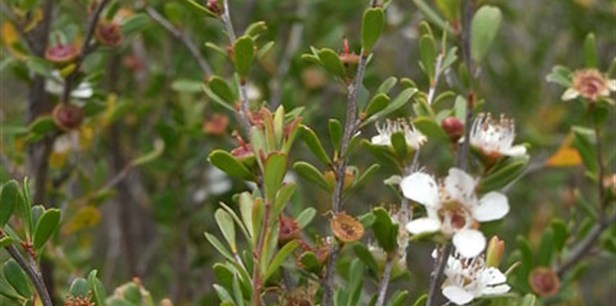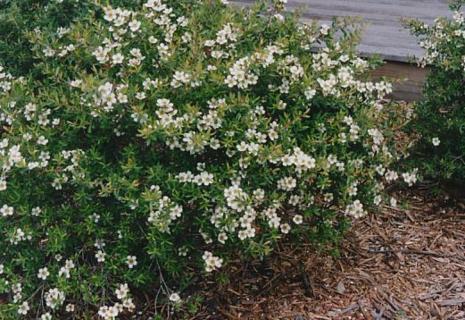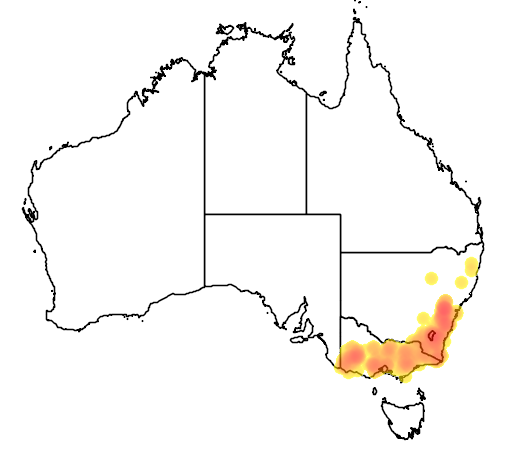Description
Common names
River Tea-tree, Blunt-leaf Tea-tree, Creek Tea-tree, River Teatree.
Scientific names
Leptospermum obovatum.
Family
Myrtaceae.
Genus
Leptospermum.
Name origin
Leptospermum, from Greek leptos, slender, and sperma, seed, referring to narrow seed of some species. Obovatum, from Latin obovatus, referring to obovate (broadest beyond middle) leaves.
Rainfall
600mm.
Growth height
Up to 2m.
Presence in Australia
Noted in the areas Deadman"s-Bungowannah-Long Flat; Munderoo; Tooma; Lower Tooma-Greg Greg; Bringenbrong-Khancoban; Greenhills-Upper Tarcutta and Upper Adelong-Upper Yaven. Possibly also in areas surrounding those noted.
This specie has been identified in the following Australian states: NSW, ACT, Vic.
Habitat
Swampy places, or among granite or sandstone rocks along swiftly flowing streams.
Habit
Upright, erect, dense green shrub to over 2m high. Smooth firm bark and aromatic leaves 5-20 mm long.
Site preference
Moist soils. Tolerates inundation, most frost and dry periods.
Characteristics
Very hardy.
Flowering
White, Nov-Jan.
Seed collection
Any time. Seeds retained on plants for many years, and shed after adversity such as injury, drought or fire. Collect capsules from older wood. Seeds highly viable, remaining so for many years in storage.
Propagation
From seed or tip cuttings, which strike readily. Sow light scattering of seed and cover lightly. Germinates in 2-5 weeks. Capillary watering should benefit fine seed. Suitable for direct seeding into pots.
Regeneration
From seed dispersed by insects, including ants.
Shade and shelter
Useful low-level cover in windbreaks.
Land protection
Excellent for controlling streambank and gully erosion due to soil-binding fibrous roots.
Wildlife
Excellent streamside habitat. Shade and insect source for fish. Submerged branches fish habitat. Flowers are a good pollen source for many insects, including moths and butterflies, and nectar source for birds.
Ornamental
Attractive. Prune regularly to encourage bushiness.
Other
Used in colonial medicine.



